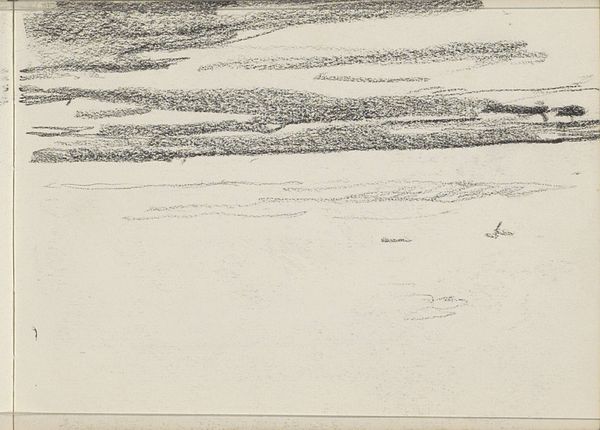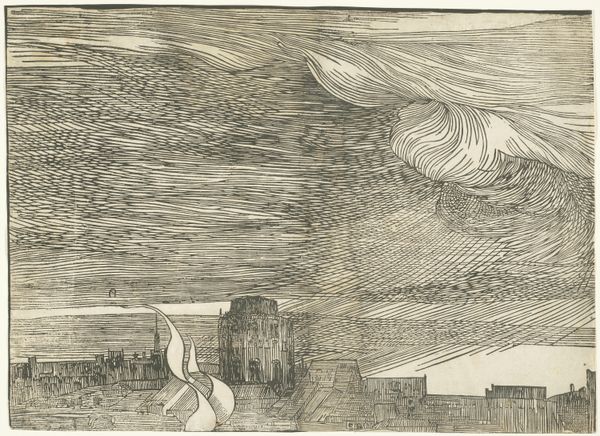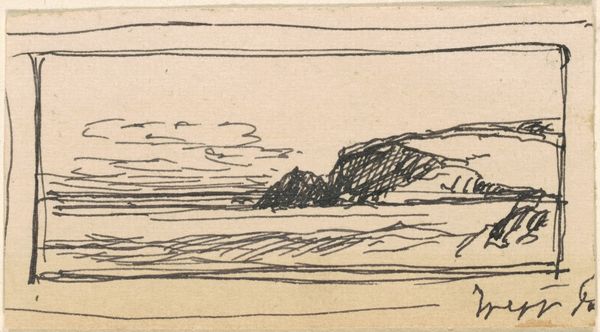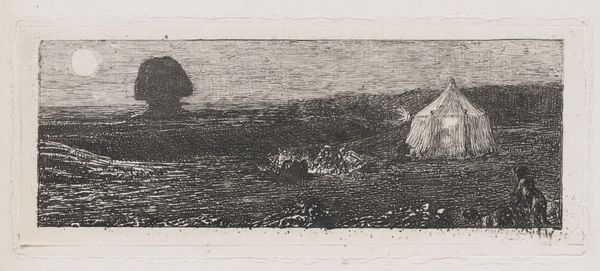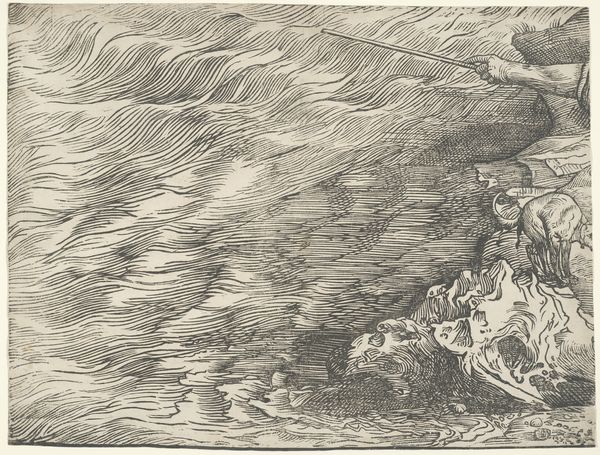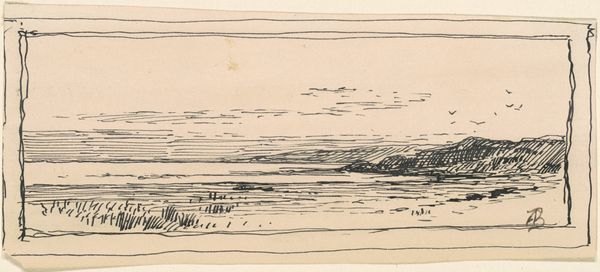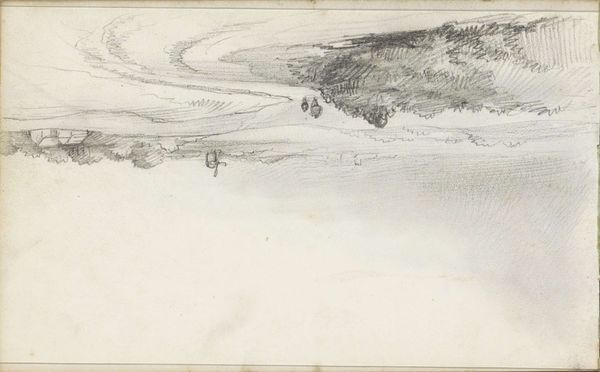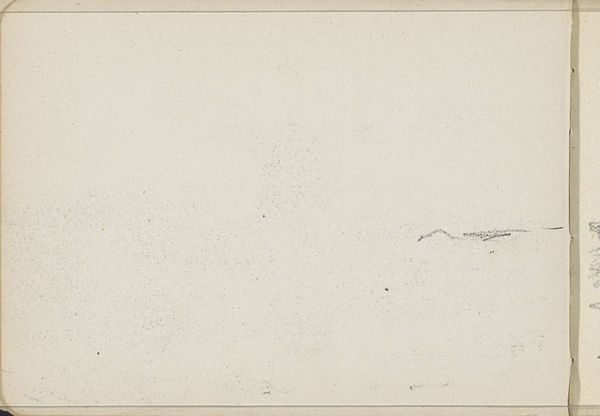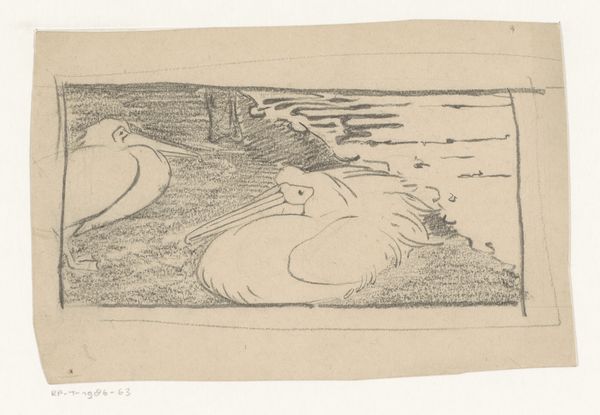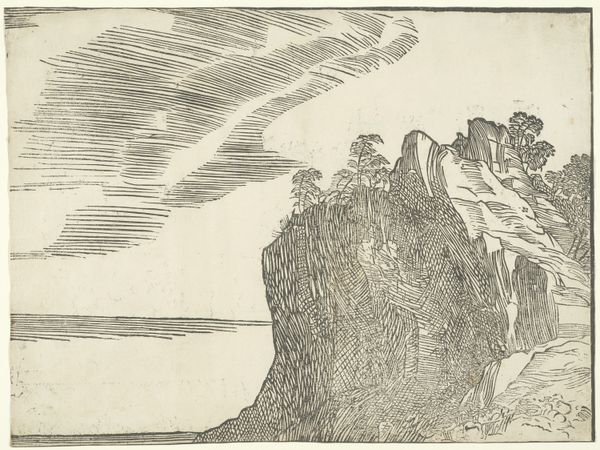
The Submersion of Pharaoh's Army in the Red Sea c. 1515 - 1549
0:00
0:00
drawing, print, paper, ink
#
drawing
#
pen drawing
# print
#
landscape
#
paper
#
11_renaissance
#
ink
#
line
#
italian-renaissance
Dimensions: 401 × 546 mm
Copyright: Public Domain
Curator: Titian's "The Submersion of Pharaoh's Army in the Red Sea," dating from around 1515 to 1549, presents a striking landscape, an ink drawing on paper now held at The Art Institute of Chicago. Editor: My immediate response is the starkness of it. The use of line, especially in the sky, gives it this overwhelmingly bleak feeling. There’s such economy of means, a sort of existential minimalism almost, yet depicting this cataclysmic event. Curator: Absolutely, that sparseness highlights the drama of the scene. Note the rigorous horizontality established by the ruled lines in the sky and sea, creating a sense of overwhelming, almost oppressive flatness. This linear organization effectively underscores the chaos of the biblical narrative, a structured disaster if you will. Editor: The structured disaster aspect really hits home for me. Given its creation within a highly patriarchal, colonial context, one must consider this depiction through an intersectional lens. Pharaoh’s army, embodiments of systemic power, are being dismantled by a force arguably acting on behalf of the oppressed. Do we read the flatness as symbolic of a flattening of power hierarchies, a wiping-clean? Curator: An intriguing proposition. The reduction to line certainly abstracts the figures, universalizing the event perhaps. Yet, look closely at how Titian uses varied weights and densities of line to articulate spatial depth and atmospheric perspective. This meticulous detailing creates visual interest within the simplicity. Editor: But can that meticulous detail truly be divorced from the sociopolitical milieu that informed it? Art historical methodology cannot exist in a vacuum. Who had access to visibility then, who did not? Consider how these aesthetic choices also reflected contemporary beliefs about power, justice, and divine intervention, especially in light of colonialism and subjugation. Curator: Indeed. However, regardless of these crucial perspectives, we should acknowledge how he transforms ink into dynamic movement. The sky, with its varying line weights and patterns, contrasts the static sea. Even in destruction, there is aesthetic elegance and refinement. Editor: Well, this drawing really gives us plenty to think about, even through such a seemingly sparse image. Curator: A testament to its power, really. A single artwork that balances an artist's choices with potent sociopolitical meanings that resonate powerfully even centuries later.
Comments
No comments
Be the first to comment and join the conversation on the ultimate creative platform.
